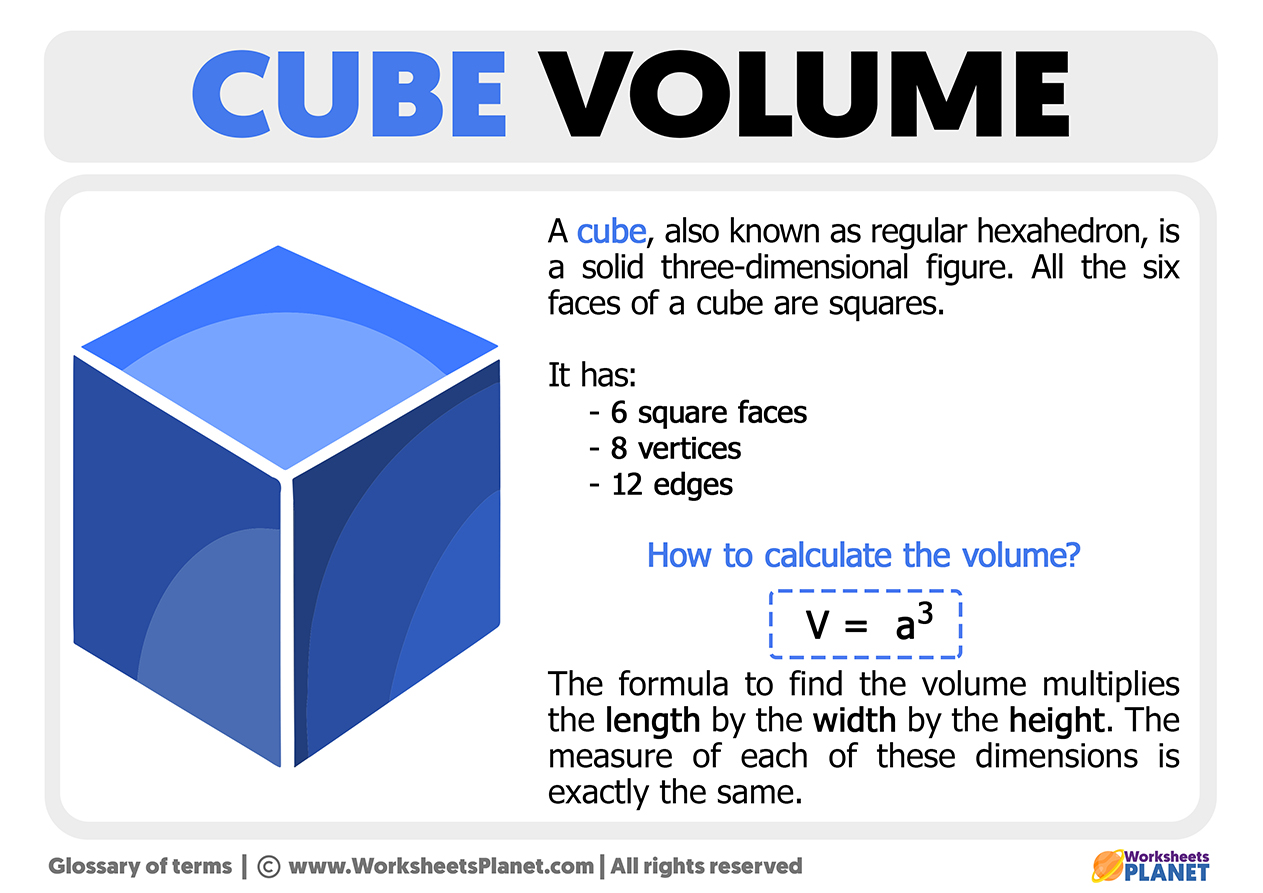The volume of the cube is the space that this geometric solid occupies. The cube is a geometric solid composed of 6 square faces. Therefore, the volume of the cube depends only on the measure of its edge.

The volume of the cube is equal to the length of the edge raised to 3, so:
V = a³
What is the formula for the volume of a cube?
To understand the formula for the volume of the cube, we will identify its main features.
- The cube is a particular case of a polyhedron.
- It is formed by 6 square faces, 12 edges, and eight vertices.
- In the cube, all the edges are congruent.
- The cube is a polyhedron,
- The cube is considered a parallelepiped. That means that its faces are made up of squares.
The volume of the cube is the multiplication of the length by the height and width. Since all its edges are congruent, measuring the volume of the cube is no more than the cube of the edge, that is:
V = a³
How to calculate the volume of the cube?
To calculate the volume of a cube, knowing its edge length is enough to calculate the cube of the edge.
Example 1:
A container is shaped like a cube with sides of 12 cm, so the volume of the cube is:
Resolution:
V = a³
V = 12³
V = 1728 cm³
The volume of this container is 1728 cm³.
Example 2:
A polyhedron has 6 faces, all square, with edges of 4 meters, so the volume of this polyhedron is:
Resolution:
We can see that this polyhedron is a cube, so just calculate the volume of the cube:
V = a³
V = 4³
V = 64 m³

